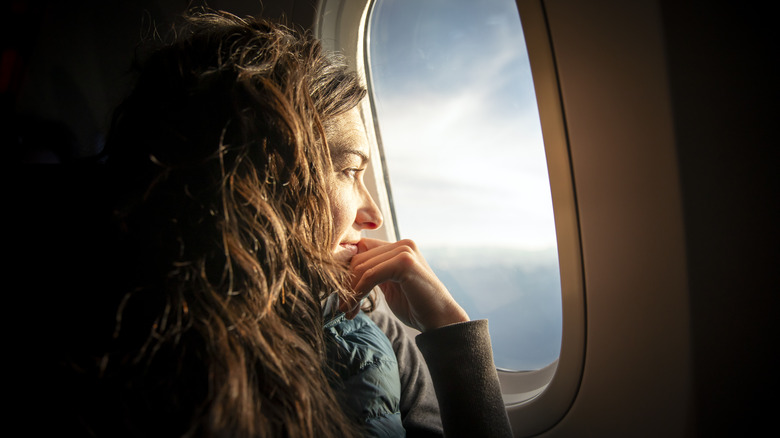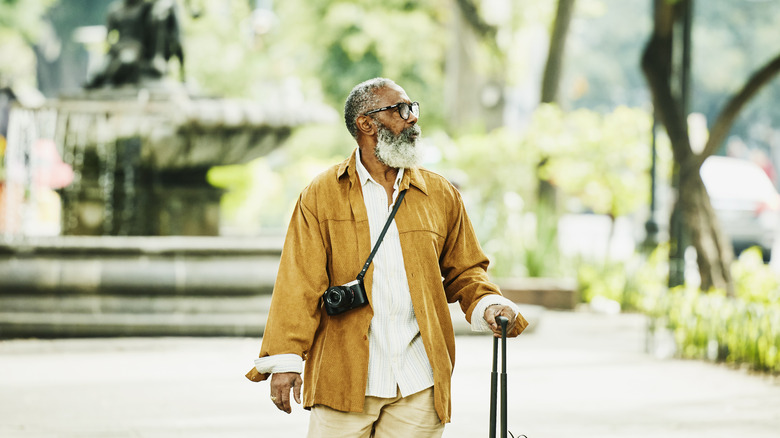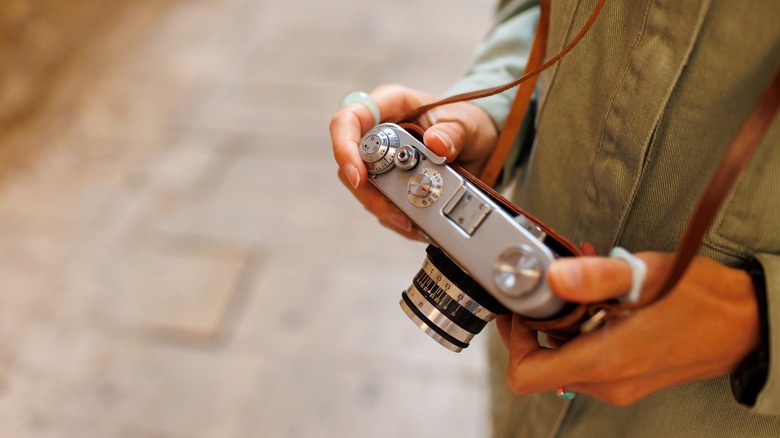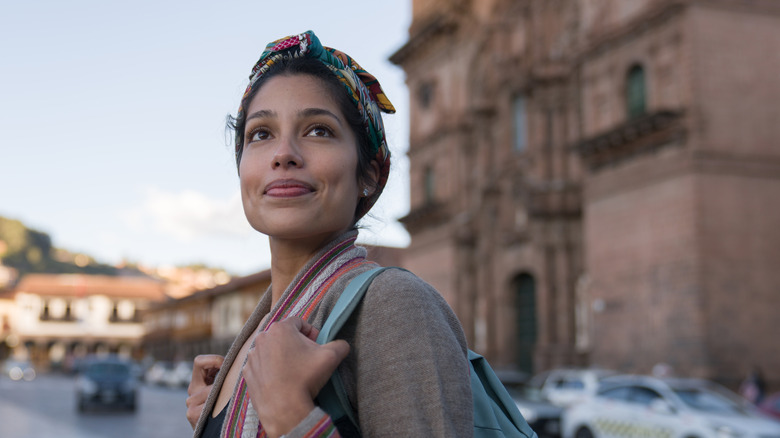5 Things People Miss About Traveling Before The Internet Existed
With each new invention, something often disappears. Whether that's social skills lost to social media, group tune-ins to on-demand viewing, or birthday recall to Facebook, it's a reminder that any progress usually comes with a cost. That's true in travel, too. While the internet and its wholesale integration into everyday life over the past two decades has brought incredible advances to the travel world at every level — including the best apps for travel planning and Google Translate travel hacks — it's also scattered previous perks to the winds. More travelers are clearly missing the old school, too, and seeking slow travel and digital-free tourism to enhance their experiences and well-being on the road. Travel agents and tourism operators are picking up on this, offering phone-free trips and hotels without Wi-Fi, and even paper maps and Polaroid cameras.
As travel — and travelers — look for more ways to make the experience more meaningful, they might be well-served by looking back to travel before the internet. There, they can discover travel bonuses that modern travel can't always provide, even with artificial intelligence, big data, virtual and augmented reality, and personalization tools. Here are five things people miss about traveling before the internet and how they can once again can enrich the journey.
1. You could truly disappear
Anyone taking a trip before the mid-to-late 2000s, before Wi-Fi and the internet dug its claws into travel, could pretty much disappear entirely. After waving goodbye to loved ones at home, travelers were rarely heard from again until they got back, apart from perhaps a short and expensive long-distance call on a pay phone or scribbled postcard stuffed in the mailbox.
Today, that experience has mostly vanished and been replaced with constant check-ins, posts, tags, selfies, reels, and more — so much so that even a brief disappearance becomes a cause for alarm. This old-school disconnect offered more relief to travelers, making it much easier to hit the reset button on their brains, and science backs this up.
It also emboldened travelers to embrace more experiences. Similar to the Las Vegas slogan — what happened on the road, stayed on the road. For travelers today, this perk is still within reach and starts with leaving the phone at home, logging out of all social media, and shifting from a mentality that says "look at me," to "look at that."
2. You took fewer photos with more focus
Before 2003, the first year digital cameras outsold film ones, photography on the road was far more restricted. The number of photos you could take depended on how many rolls of film — usually in 24 or 36 increments — you could carry. That made each picture more valuable and therefore important to get just right. Snapping images willy-nilly, including of your Parisian eclair from 10 different angles, was a total waste of resources and money.
The limitation also led to more travel experiences, as people didn't stop every few steps to take a dozen more pictures. Furthermore, you wouldn't even see the photos until after you got home and gave them to the developers. When they did come back, each felt like opening a Christmas present, even the photos ruined by a finger or blurs. Travelers today might recapture some of this by switching out the digital camera for a Polaroid. Chances are, they'll revisit those photos more often, too.
3. You followed your nose
While travelers before 2000 certainly relied on guidebooks, glossy magazines, and PBS shows to help craft their itinerary, they still had to follow their nose far more than now — sometimes literally to an open restaurant. Often this began with the first step outside the airport, bus terminal, or train station, where the destination spread in all directions and transformed into the travel edition of Choose Your Own Adventure. That left far more to chance and spontaneity, which every seasoned traveler knows, is where the most memorable experiences tend to occur.
Travel icon Rick Steves calls it, "The Beauty of Spontaneous Travel," and points to one experience the Croatian town of Motovun, where he followed his ears to an a capella group practicing behind a closed door. After gently pushing it open, he recalls, "I was treated to what amounted to a private concert — and a lifelong memory." Travelers today can still have the same, especially if they make a point of going in cold, opening all senses, and letting the location speak for itself, rather than a website or app.
4. You forged true social networks
Before social media, online forums, and dating apps became the norm, travel required old-school, face-to-face meet-ups to build social networks and relationships. It was serendipity and shared experience that brought people together rather than the suggestions of the great algorithm based on our data. It also increased the diversity of these relationships, as travelers were not directed to others with like minds, as apps, social media, and meet-up groups today do. And this happened at every turn, be it bunkmates at the hostel, waiters at the restaurants, members of a tour, locals on the park bench, or buskers in the street.
Many of these people would often go above and beyond, too, leading you to local gems, like the bakery in Bologna that sells the new day's bread tax-free out the back door at 3 a.m., or inviting you to events, shows, or parties later that evening. This true social network was far more fulfilling than the tap and swipe-based ones today, and, while harder to achieve now, is still within reach for those willing to extend a handshake instead, rather than click a "like."
5. You had the destination more to yourself
While tourists have always flooded the streets and squares at popular destinations — be it Times Square in New York City, Ponte Vecchio in Florence, or The Great Wall of China — at peak season — the swarm never reached the degree generated almost instantly today by its appearance on a hit show or in a post of an "influencer." Indeed, many believe the instant fame bestowed by Instagram alone has helped ruin dozens of destinations. That's led some of the most overwhelmed ones to plead with them to stay away, even enacting bans and closures.
That's what Pomfret, Vermont did to combat an "unprecedented surge in Instagram and TikTok-fueled tourist 'influencers,'" who turned it into "a social media photo destination," according to a GoFundMe post that raised money to "reclaim" the neighborhood where people were flocking to see and be seen in the fall foliage. They closed the road at the entry points and put up temporary signage to keep people away.
That these social media-mandated destinations sometimes cost selfie-takers their lives is yet another motivation for such bans. Before the internet made all this possible, and profitable, even the popular destinations suffered far less from the phenomenon, keeping the welcome mat out. Perhaps more importantly, it kept more of the experience to yourself. Fortunately, travelers today can experience the same by making a point of getting off the beaten path and using social media to see where not to go.





